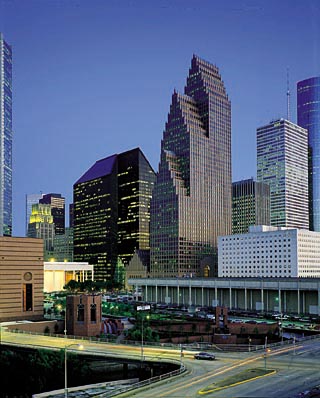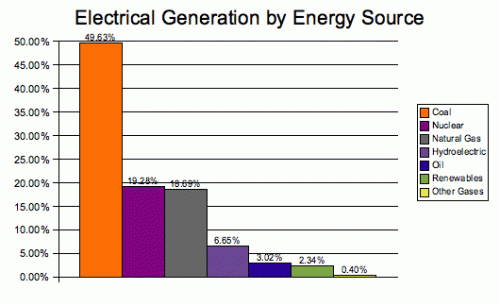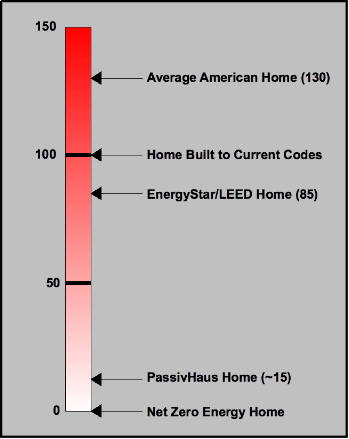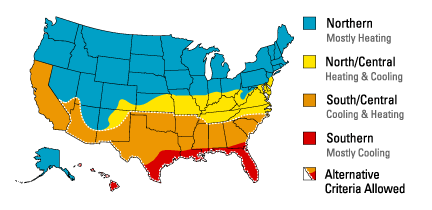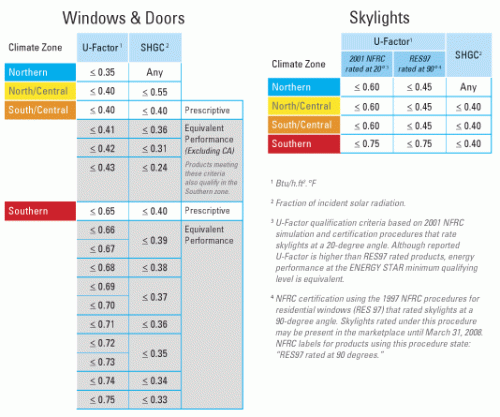”…the world’s richest 20 per cent of the population consume 86 per cent of its goods and services, over half its energy and nearly half its meat and fish.”
Given how few buildings architects actually design in this country compared with the EU for example, I’m not sure how relevant the profession is to the topic of sustainability. However, I was curious enough to see what might be the official AIA word on the subject. I found this posting on the internet from the AIA Committee on the Environment.
“The linked domains of sustainability are environmental (natural patterns and flows), economic (financial patterns and equity), and social (human, cultural, and spiritual). Sustainable design is a collaborative process that involves thinking ecologically—studying systems, relationships, and interactions—in order to design in ways that remove rather than contribute stress from systems. The sustainable design process holistically and creatively connects land use and design at the regional level and addresses community design and mobility; site ecology and water use; place-based energy generation, performance, and security; materials and construction; light and air; bioclimatic design; and issues of long life and loose fit. True sustainable design is beautiful, humane, socially appropriate, and restorative.”
My first reaction to this lengthy, rambling definition was huh???!!! what the %$#@ does that mean? No wonder I hear quotes like “If it’s not beautiful, it’s not sustainable” from celebrity architects. Definitions like that, however well meaning are a license to do just about anything. So I thought maybe one of the leading schools of architecture would be more helpful and provide a definition with some substance. I found this posting on the Carnegie Mellon School of Architecture’s site.
“Sustainable design is a collective process whereby the built environment achieves new levels of ecological balance through new and retrofit construction, towards the long term viability and humanization of architecture. Focusing on environmental context, sustainable design merges the natural, minimum resource conditioning solutions of the past (daylight, solar heat and natural ventilation) with the innovative technologies of the present, into an integrated “intelligent” system that supports individual control with expert negotiation for resource consciousness. Sustainable design rediscovers the social, environmental and technical values of pedestrian, mixed use communities, fully using existing infrastructures, including “main streets” and small town planning principles, and recapturing indoor-outdoor relationships. Sustainable design avoids the further thinning out of land use, the dislocated placement of buildings and functions. Sustainable design introduces benign, non-polluting materials and assemblies with lower embodied and operating energy requirements, and higher durability and recyclability. Finally, sustainable design offers architecture of long term value through ‘forgiving’ and modifiable building systems, life-cycle instead of least-cost investments, and timeless delight and craftsmanship.”
Again, a long, rambling definition full of academic architectural jargon like “timeless delight”. Is this representative of the sustainable mind candy being fed to the future building designers of america? What about limits? What about carrying capacity? What about the huge energy drain, climate impact, and unsustainable ecological footprint of our existing building stock? Where is the call to action?
Looking for answers, I found the following on the Presidio School of Management’s “Sustainability Dictionary” website. Apparently in the academic world there are three different flavors or “criteria” of sustainability.
Social Criteria:
- Socially desirable
- Culturally acceptable
- Psychologically nurturing
Financial Criteria:
- Economically sustainable
- Technologically feasible
- Operationally viable
Environmental Criteria:
- Environmentally Robust
- Generationally Sensitive
- Capable of continuous learning
Although I can sympathize with architectural profession’s emphasis on social criteria such as beauty and “timeless delight”, I don’t think it serves a world facing climate change and a looming carrying capacity crisis brought on by the “peak” production and supply of oil, gas, and coal. The AIA and Carnegie Mellon definitions allude to “environmental criteria”, but only in vague terms. What is needed is a sustainable building standard that addresses the very real limits to carrying capacity and our obligations to future generations. Unfortunately, LEEDS, Energy Star, or any other “green” standard falls far short of meeting such a standard.
In 1987 the U.N. World Commission on the Environment and Development [commonly known as the Brundtland Commission] set the table for the what has been a 20 year debate on the meaning of sustainability. The classic and oft quoted definition from the commission is:
“Development that meets the needs of the present without compromising the ability of future generations to meet their own needs.”
This definition is not far removed from the “seventh generation” philosophy of the Native American Iroquois Confederacy, a philosophy that put forth that chiefs should consider the effects of their actions and decisions seven generations into the future. However, as often as I’ve seen the commission’s definition quoted, I rarely see anyone expound on what the commission meant by their simple, elegant definition.
Digging into the actual report I found that even 20 years ago the commission was deeply concerned about the impact development and population growth was having on the world’s carrying capacity with respect to several important environmental criteria.
- Global Warming
- Ozone Depletion
- Species Loss
- Desertification
- Deforestation
- Air, water, and soil pollution
In making it’s case for sustainable development, the commission’s report would define carrying capacity as:
“The population that can be supported indefinitely by an ecosystem
without destroying that ecosystem”
Although not generally part of our awareness, it is no secret that various regions and country’s of the world compete for carrying capacity and the so called developed world imports a large portion of it’s own carry capacity at the expense of other country’s and peoples. The commissions report states that:
“The Earth is one but the world is not.
We all depend on one biosphere for sustaining our lives.
Yet each community, each country, strives for survival and prosperity with little regard for its impact on others.
Some consume the Earth’s resources at a rate that would leave little for future generations. Others, many more in number, consume far too little and live with the prospect of hunger, squalor, disease, and early death.”
Carrying capacity is not just a function of population. The actual population that can be supported by the earth’s ecosystem is also a function of the average standard of living or level of consumption of that population. Lower consumption levels allow the support of a larger population, and conversely higher consumption levels will support proportionally less population
Today we find ourselves in a world of 6.6 billion people in which the world’s richest 20 per cent of the population consume 86 per cent of its goods and services, over half its energy and nearly half its meat and fish. Another 1.4 billion people in China and India (nearly 5 times the population of the U.S) are rapidly growing their economies and as they begin to approach the developed world’s level of consumption and energy density, their rising demands on the earth’s carrying capacity is driving up energy, commodity, and food costs around the world. As the world’s collective economic growth rapidly depletes non-renewable resources such as oil, gas, and coal we will soon be faced with a carrying capacity crisis in a post peak world in which countries desperately complete for resources in a limited ecosystem. The commission’s report predicted this condition twenty years ago when it stated that:
“The ultimate limits to global development are perhaps determined by the availability of energy resources and by the biosphere’s capacity to absorb the by-products of energy use. These energy limits may be approached far sooner than the limits imposed by other material resources. First, there are the supply problems: the depletion of oil reserves, the high cost and environmental impact of coal mining, and the hazards of nuclear technology. Second, there are emission problems, most notably acid pollution and carbon dioxide build up leading to global warming.”
Many informed people in and out of government are painfully aware of this impending carrying capacity train wreck. Unfortunately, it is the nature of governments to only respond to an immediate crisis. Another problem, one that the Brundtland Commission omitted from their report, is our almost religious belief in economic growth. Even modest rates of growth mathematically become exponential, so that in the context of a closed ecological system, “sustainable growth” and “sustainable development” are eventually rendered oxymorons. In order to survive, at some point in time we will have to respect our planet’s limits in terms of carrying capacity. This will mean the acceptance of limits to our population size and to our levels of consumption and waste, and the transition to a steady-state economy.
The following definition of steady-state economics is from the Encyclopedia of Earth
The phrase “steady state economy” originated from ecological economics, most notably the work of Herman Daly, but its roots are in classical economics, most notably the “stationary state” by economist John Stuart Mill. The steady-state economy is often discussed in the context of economic growth and the impacts of economic growth on ecological integrity, environmental protection, and economic sustainability. Therefore, use of the phrase “steady-state economy” requires a clear definition of economic growth.
Economic growth is an increase in the production and consumption of goods and services. For distinct economic or political units, economic growth is generally indicated by increasing gross domestic product (GDP). Economic growth entails increasing population times per capita consumption, higher throughput of materials and energy, and a growing ecological footprint.
Theoretically and temporarily, a steady state economy may have a growing population with declining per capita consumption, or vice versa, but neither of these scenarios are sustainable in the long run. Therefore, “steady state economy” connotes constant populations of people (and, therefore, “stocks” of labor) and constant stocks of capital. It also has a constant rate of throughput; i.e., energy and materials used to produce goods and services.
The “growing ecological footprint” of economic growth only becomes problematic as we begin to push up against the limits to carrying capacity. This can occur locally in an “island” economy or globally as we are beginning to experience today. Getting back to architecture and the massive ecological footprint of our building stock, our homes are but a subset of years of unsustainable development that are pushing the limits of carrying capacity. This is especially true when we consider the energy consumption and climate impact of both residential and commercial buildings. My personal definition of sustainable building design is:
Sustainable building design meets the needs of the present without compromising the ability of future generations to meet their own needs for shelter. In order for our built environment to be supported indefinitely by the earth’s ecosystem without destroying that ecosystem, sustainable building design must be based on a net zero energy standard. A net zero energy standard, in no way constrains designers from creating buildings that are socially desirable, culturally acceptable, and psychologically nurturing.















